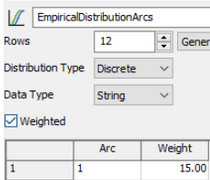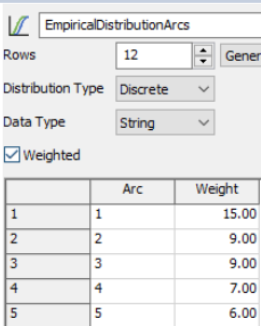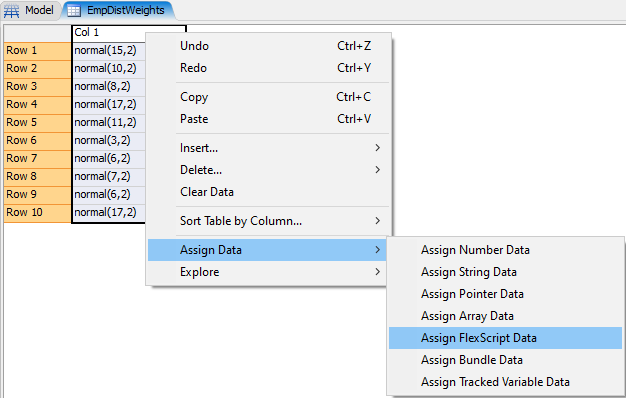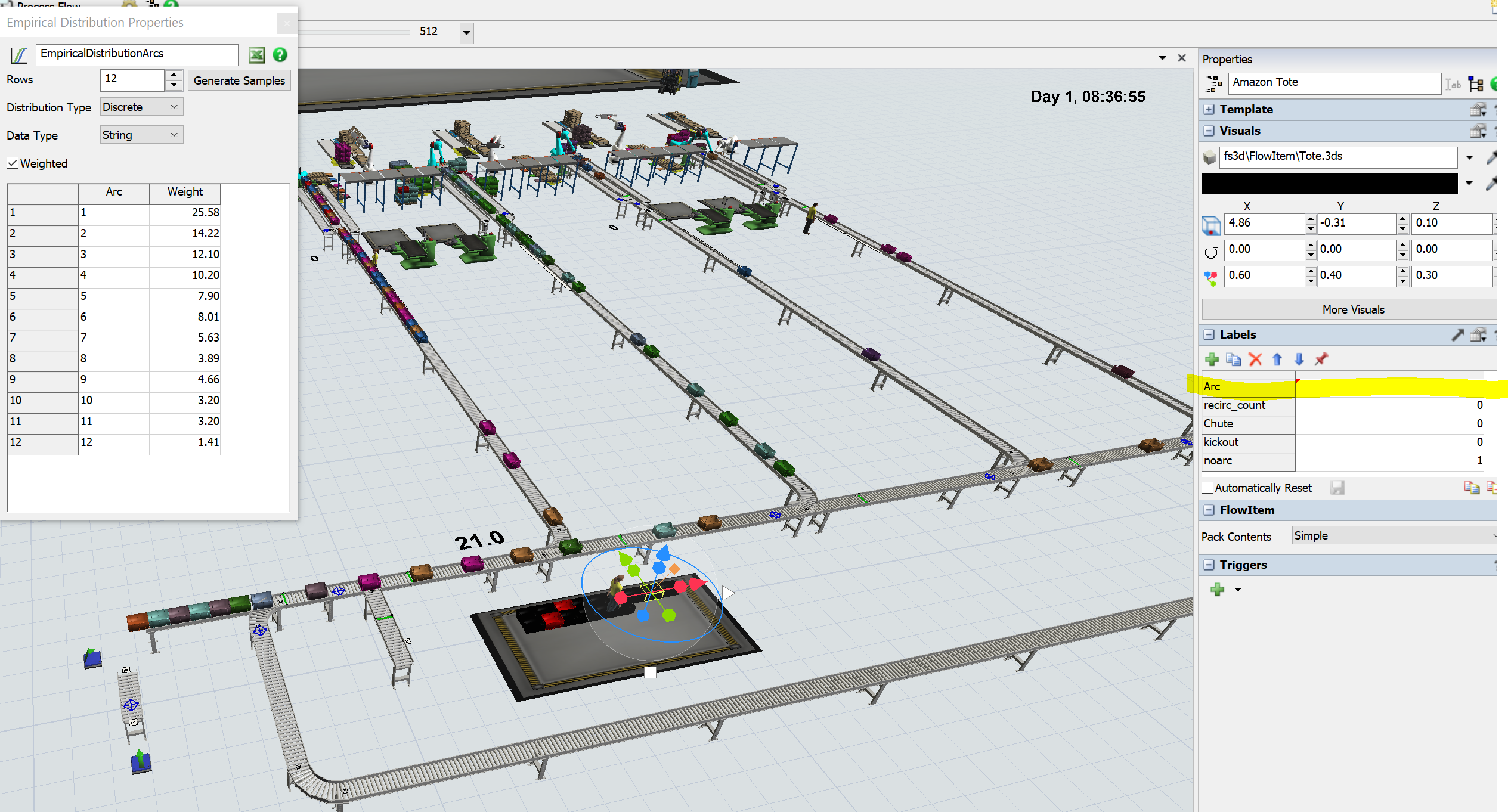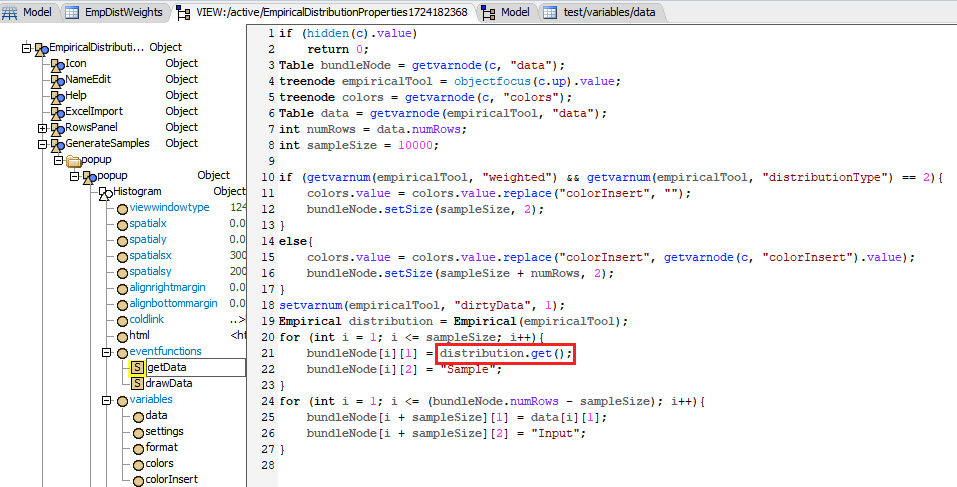Hi, I am trying to model the induction of totes into a conveyor based on a forecasted probability (weight).
So far I am using the following empirical distribution:

Now, I would like to add in variability in terms of the number of consecutive totes for the same arc that go into the conveyor.
In other words, I would like to have parameters that increase/decrease the probability of having more/less consecutive totes for the same arc:
for example:
1-4-6-1-3-1-6 vs 1-1-1-4-6-6-3
does anyone have any ideas on how to model this?
In my head the expected behavior would be something like this:
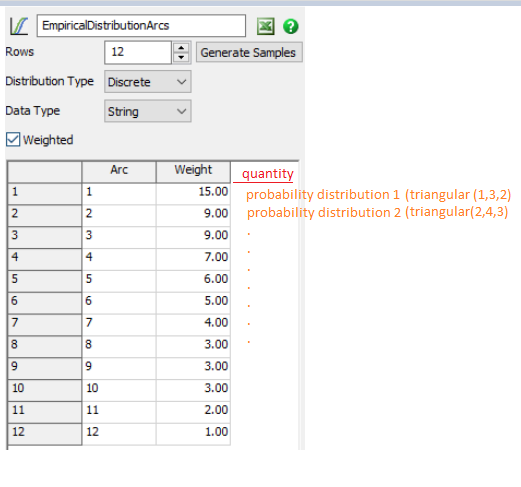
Thank you in advance,
Lambert

